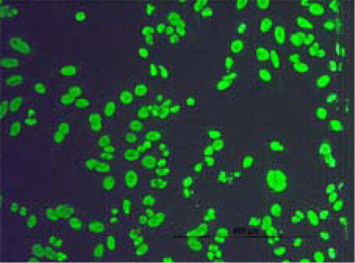Background and current state of research
Despite major progress in utilizing genome-wide scans in patient cohorts and mouse models to identify new susceptibility genes for chronic inflammatory diseases, some aspects of their genetics remain unclear. These include gene-gene and gene-environment interactions as well as epigenetic contributions to disease susceptibility. We recently generated a 4-way autoimmune prone intercross mouse line. This mouse line spontaneously develops arthritis, pancreatitis and lupus (ANA, nephritis). Furthermore, mice develop epidermolysis bullosa acquisita upon immunization. Analysis of QTLs controlling susceptibility to these diseases has been completed for mice of the 4th generation (G4) of the intercross line. However, as the identified QTLs encode for several hundred genes, further intercrossing is required (and ongoing) to allow additional crossing-over and thus fine-mapping of the QTLs.
Our goals
Our project has the following aims:
- to identify disease-specific Quantitative Trait Loci (QTL) and susceptibility genes in models of chronic inflammatory diseases,
- to identify gene-environment (diet) interactions influencing chronic inflammation,
- to identify dietary impact on epigenetic control of genes influencing susceptibility to chronic inflammation.
How to get there
To define environment interactions, we will test the influence of different dietary regimens: high fat diet, energy restriction and methionine- reduced diet on disease progression in the parental strains, mapping common and disease-specific QTL for spontaneous chronic inflammatory diseases. We plan to use a 4- way cross that we recently generated to address this question. The 4 strains we chose are, BXD2 (spontaneous arthritis), NZM (spontaneous lupus), MRL (EBA-susceptible, spontaneous autoimmune pancreatitis), and Cast/Ei (wild-derived autoimmune-resistant). 600 × G4 progeny (fourth generation mixed genomes) have recently been phenotyped and genotyped to identify major QTLs controlling spontaneous lupus and arthritis, pancreatitis and EBA development. Individual G4 mice develop one or multiple diseases at 3-6 months. We completed the feeding study with over 1.000 mice from generation 15-20. These samples have been genotyped and partially phenotyped (i.e. weight, ANA). We plan to continue phenotyping of these mice (see below). This information will be used to fine map the identified QTL for the indicated traits down to 1 Mb. We expect that we will be able to identify candidate genes for some QTLs within the framework of this RTG. We will then proceed to map diet-affected QTLs influencing disease susceptibility using the 4-way cross. Quantitative trait genes will be identified and confirmed using established methods e.g. haplotype sharing analysis, expression profiling, sequencing, and transgenics.

